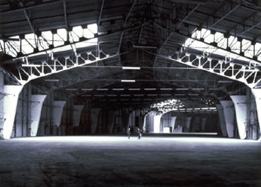meetings. Many museums furthermore have programs in which they take samples of their wares out to the schools or community organizations. Every museum is a place to which people in the community can bring their wares, their ideas, and their events, thereby creatively contributing to the museum programs or exhibitions. Museums are places where the staff, as well as the public, can make many discoveries, sometimes through systematic research, and always through forms of investigation that are required in creating their exhibit or their written material. The Exploratorium is a relatively young museum. It has been in existence only 11 years and yet has become such a center for all manner of diverse activities. I am both flabbergasted and inspired by the richness of the educational endeavors that center around a museum's activities and props. Yet I do not believe that this richness can arise automatically. None of the projects, exhibits or written material or visuals or lectures or classes that we have engaged in were easy to do. They all required much new thought and discussion, together with long hours of experimentation and effort, and usually, a good chunk of money as well. Frequently museums are not as good as they can be because these kind of activities have not been taken seriously enough by the administrators or because the people who have been engaged in them have not been those who enjoy and have experience in teaching or who thrive on learning. Good teaching whether in a museum or in a school can never happen without a lot of thought and planning. Furthermore, teaching requires a continual refreshment. Last year's lecture notes, for example, invariably require re-understanding and reorganizing of the subject matter in order to be useful this year. To some extent a "bad name" has become associated with the popular conception of museums because many of them have been stagnant. When I first told people that I was going to start a science museum in San Francisco, many of them turned up their noses at the notion of another museum. It was partly in response to this reaction that we invented |  | ||||
The empty Palace of Fine Arts in 1968 | |||||
the word "Exploratorium" because what we had in mind would be a place for exploration, both for our staff and for our visitors. But in reality, it is essentially a mistake to make distinctions between exploratoriums, science centers, museums or discovery places. The science centers that have been springing up during the past ten years throughout this country and throughout the world should think of themselves as very much allied with other museums, including art museums, natural history museums, history museums, and also those that involve archaeology, anthropology or live animals and plants. The creation of involving exhibits does not necessarily imply that one must be able to touch or activate exhibits. Although when exhibits are "participatory" the initiation may happen more readily because many people are drawn into paying attention by touching, changing and activating the exhibits. But even then the resultant learning is highly dependent on the attitudes and past experiences that the visitors bring to the museum. I want therefore to talk about the learning which can take place in museums by telling of some of my own experiences that are characteristic of different kinds of museum learning. My earliest recollection of a museum exhibit that affected me was the armor display at the Metropolitan Museum of Art. I was in elementary school at the time and we were studying the knights of yore. The opportunity to | |||||